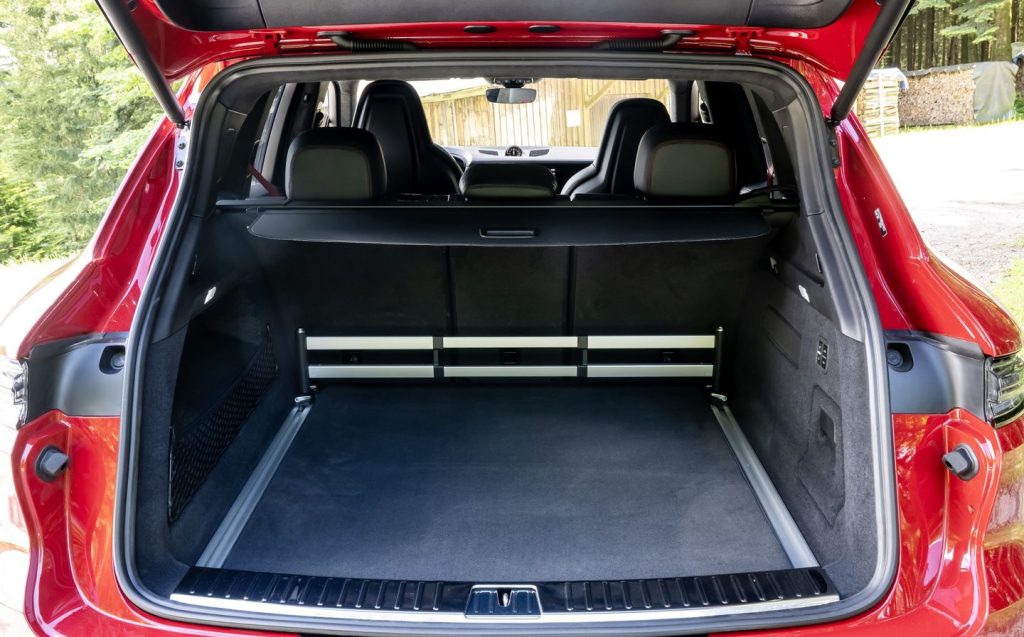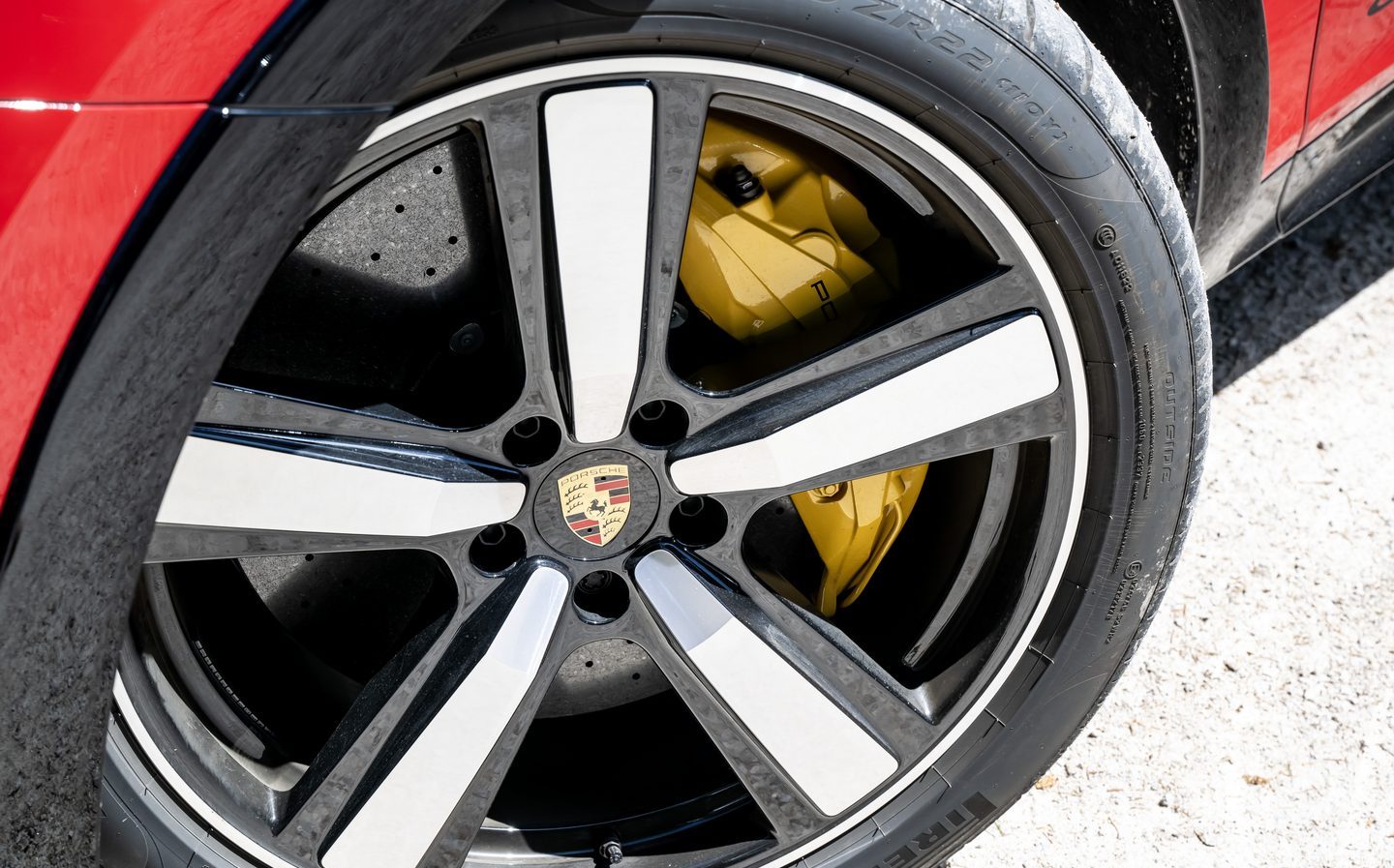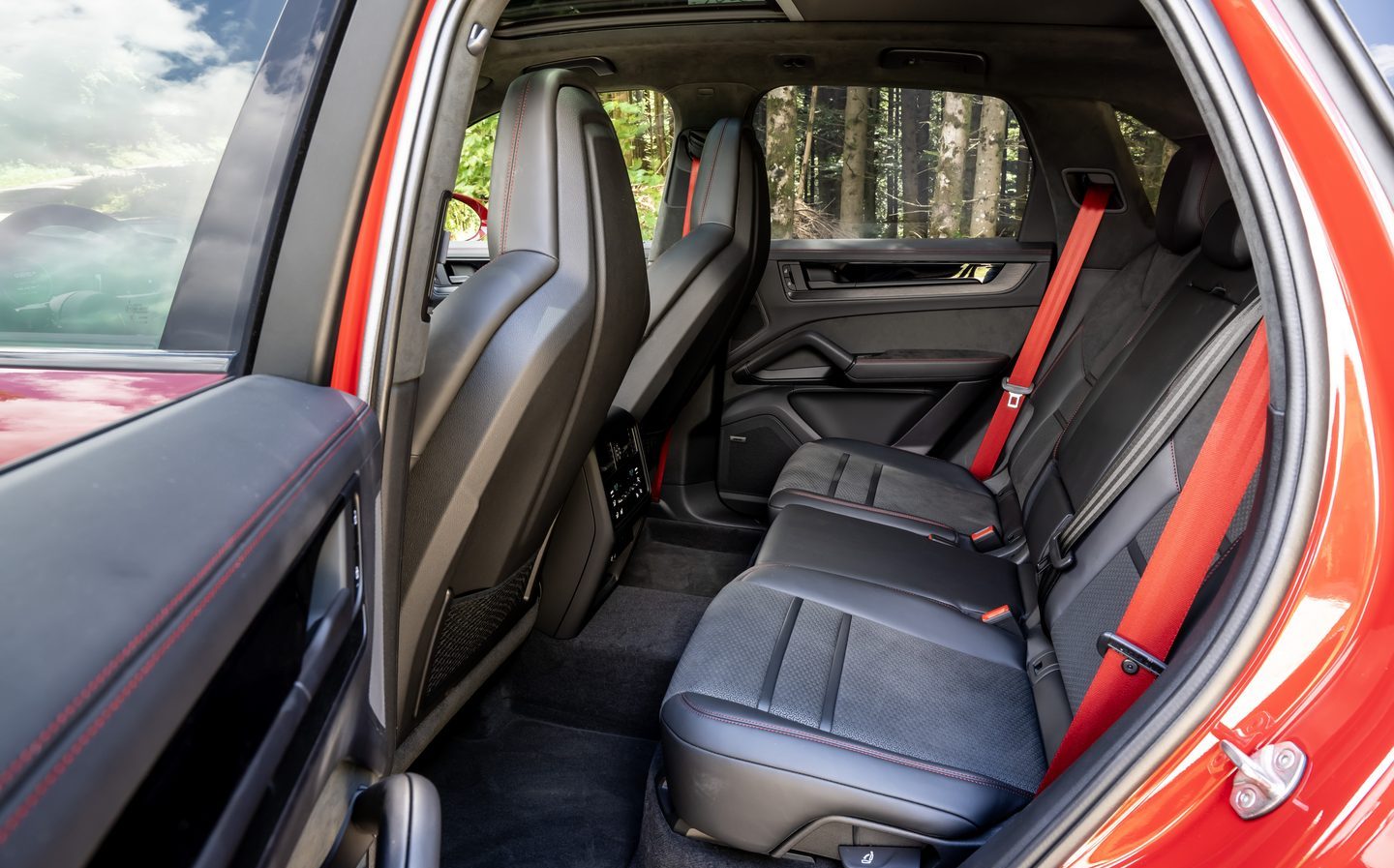Porsche Cayenne GTS 2024 review: It’s sharp, yes, but is it the Cayenne sweet spot?
Fabulous. Buy the S instead though.
In our formative years, when we slowly transition from adolescence to adulthood, we’re often told it’s important to find a purpose. Family, teachers and less-than-impressed members of law enforcement all queue up to tell us we need to find the thing that makes us want to get out of bed in the morning.
Some find it quickly, setting their sights on a career early and never wavering, while others take a little longer to work out where they fit in the grand scheme of things. There’s nothing wrong with either method, and there are advantages to both, but if cars can embark on the same journey of discovery, the Porsche Cayenne GTS fits squarely into the latter camp.

Naturally, Porsche would deny such allegations. The company describes the GTS as the Cayenne for driving enthusiasts, and there’s an issue immediately. Porsche is trying to market a massive, 2.2-tonne luxury SUV as a car for keen drivers. You know, the people who wear racing booties without a hint of irony and see the Goodwood Festival of Speed as the social event of the year.
Obviously, should such people want a roomy Porsche that drives well, the Panamera would be the obvious choice. But in a world where SUVs seem to have taken over, Porsche is offering an alternative in the Cayenne.
The only catch is the Cayenne has always been the best car in its class when it comes to driver engagement. Even the mighty BMW X5 is not as agile or as involving as the Porsche, even when the latter is in its cheapest, most unspectacular guise.
So not only is the concept of an even more driver-orientated Cayenne somewhat ridiculous; it’s also somewhat unnecessary.

But Porsche has pressed ahead nonetheless, fitting the GTS with sportier air suspension that sits 10mm lower than that of the standard Cayenne, as well as the Sport Chrono package which gives the car a choice of driving modes and a stopwatch on the dashboard. Lots of glossy black trim is also included, and you get the Sport Design package, with its more aggressive bumpers.
Inside, it’s all very familiar, as the GTS continues with the latest-generation Cayenne’s screen obsession. There’s a digital instrument display nicked from the Taycan electric car, and there’s a massive central touchscreen. Passengers can also have their own infotainment screen to play with if you tick the right option boxes.
But that’s all conventional Cayenne stuff, and the GTS only really adds some motorsport-inspired aesthetic upgrades.

Chief among those tweaks is the inclusion of something called Race-Tex. It’s Porsche’s own Alcantara-like microfibre material, and it’s the same stuff car enthusiasts’ racing booties are made from. Given the target market, the stuff is everywhere, from the door panels to parts of the dashboard and from the centre console to the seat inserts. It’s even used to line the roof.
Of course, because racing and claustrophobia apparently go hand in hand, it’s all black and it makes the Cayenne’s cabin feel dark, dingy and compact, even though it’s actually very spacious. The optional panoramic roof is a must if you want rear passengers to notice the ample legroom and headroom available to them.
In the boot, 656 litres of luggage space awaits your suitcases, shopping bags, spare tyres or whatever else you’re likely to chuck in the back of your Cayenne.

All of which means the Cayenne GTS is just as practical as any other petrol-powered Cayenne, regardless of whether you choose the conventional SUV tested here or the fastback-shaped Coupé. But the GTS does get some performance enhancements to complement the numerous sporty visual changes.
Alongside the air suspension and the drive modes, Porsche has fitted some clever mechanical upgrades taken from the flagship Cayenne Turbo GT, which isn’t available in this country any more. These include different anti-roll bars and brakes, as well as modified suspension geometry that’s supposed to be better for cornering performance.
If you choose the Coupé version, you can have some lightweight optional extras, too, although they will only shave a maximum of 25kg from the car’s kerb weight. Bring your dog along for the ride and you’ll have undone all Porsche’s good work.

Anyway, all that is designed to make the Cayenne GTS handle more astutely than the S, but that has not been the sole focus for Porsche’s engineers. The GTS takes the 4-litre turbocharged V8 from the S model and turns it up a notch, lifting the power output from 468bhp to 493bhp.
The eight-speed automatic gearbox and all-wheel-drive system both remain more or less unchanged but the power boost means the GTS is a fraction faster than the S, getting from 0-62mph in 4.4 seconds and on to a 171mph top speed.
It’s unquestionably rapid but the GTS never feels as fast as the figures — both on paper and on the screen behind the wheel — suggest. Perhaps it’s because of the car’s bulk, or maybe it’s a question of refinement, but the Cayenne never really feels like it’s trying very hard. Then you look down and find yourself travelling at licence-endangering speed. It really is deceptive.

That’s despite the thunder of that V8 engine, which makes a deep, distant rumble at lower speeds and a less-than-subtle roar as it’s pushed toward the red line. And when the sports exhaust is engaged, it’s even more vocal, making the V8 in the BMW X5 sound meek and understated in comparison.
Nevertheless, the GTS is not about raw power — the Turbo-badged Cayennes fill that brief — but poise, and the GTS has that in abundance.
Of course, we’re talking about fine margins, given the brilliance of even the most basic of Cayenne models, but the GTS is noticeably sharper and sportier than even the S on the road. The steering is that mite more responsive, the body control is that fraction tighter and the balance is ever so slightly more impressive.
Even if you specify an S with the optional air suspension, it won’t quite have the bite and verve of the GTS, which is spectacular even in its most comfort-orientated setting. There, you will encounter some body movement in corners, but not a lot considering the size and bulk of the vehicle, and grip is seemingly limitless. Even when provoked, the GTS still feels stable and sublime. You have to remind yourself you’re in an SUV.
Up the ante and engage Sport mode and the car feels even more locked down, with that bit more slip provided by the clever torque vectoring system, which can direct the power to whichever wheel requires it to help the car pivot around a corner. Yet even so, the immense grip from those fat tyres keeps it feeling planted even when cornering speeds border on the ridiculous.

If you want to explore the limits of grip and capability, Sport Plus mode is the setting of choice, putting maximum aggression into the throttle response and gearbox, as well as reducing the Cayenne’s body roll to practically zero. Even when flung into corners, the GTS just stays flat and level, completely unflustered by any attempt to make it lean over.
It’s highly impressive, and it provides an eye-opening insight into what Porsche’s engineers are capable of.
But there’s a catch, and it’s felt through your back pocket. Both of them, in fact. Because the ride in Sport Plus mode is firm in the extreme, even on the perfectly smooth roads of southern Germany. Despite surfaces that make silk handkerchiefs look like sheets of 40-grit, the GTS found bobbles and bumps from nowhere, conjuring them beneath its tyres with the sort of apparition skills that would make Hermione Granger gasp. And although things settle down in the Sport and Normal settings, the GTS’s ride never feels quite as pliant as that of the S.

Strangely enough, though, the comfort (or lack thereof) wasn’t the biggest complaint of our time with the GTS. Because Porsche, in its infinite wisdom, chose to fit our test car with the optional carbon-ceramic brakes, designed to be heat resistant even when you’re braking hard lap after lap. That’s fine if you’re worried about performance on lap 43 at Silverstone, but it’s less appealing on the A43 just outside Silverstone, where the brakes will feel inconsistent and grabby when they should be powerful and predictable.
It isn’t a safety issue — there’s loads of stopping power there once they’re warmed up — but it’s difficult to be smooth with them, and that’s going to irritate your passengers in traffic.
Stick with the standard steel brakes, then, and the GTS will do everything it’s supposed to do. It’s more powerful than the S and more agile than the Turbo.
But the problems lie in the GTS’s inception more than its execution. While GTS variants make lots of sense in the 911s, Boxsters and even Taycans of this world, will the stiff ride of the Cayenne really sit well with customers buying a big, luxury SUV? And can that be forgiven in something that isn’t a flagship model? For our money, a wisely-optioned S is a better bet.
Related articles
- If you found our review of the new Porsche Cayenne GTS interesting, you might like to read a review of the updated Porsche Taycan
- Or read our review of the new electric Porsche Macan
- Did you hear that the Porsche 911 is gaining hybrid power for the first time ever?
Latest articles
- Watch new Porsche 911 GT3 smash Nürburgring record for manual cars
- Skoda Elroq 2025 review: Czech carmaker can’t seem to miss with its electric family cars
- Five best electric cars to buy in 2025
- Should I buy a diesel car in 2025?
- F1 2025 calendar and race reports: The new Formula One season as it happens
- Zeekr 7X AWD 2025 review: A fast, spacious and high tech premium SUV — but someone call the chassis chief
- Denza Z9GT 2025 review: Flawed but sleek 1,062bhp shooting brake from BYD’s luxury arm
- Extended test: 2024 Renault Scenic E-Tech review
- Best-selling cars 2025: The UK’s ten most popular models of the year so far


























